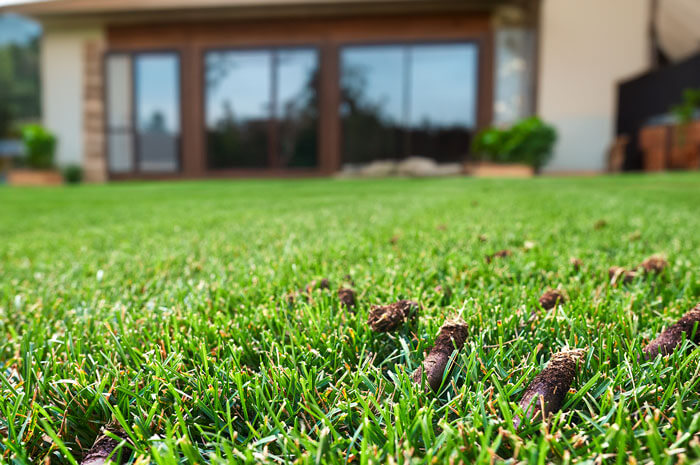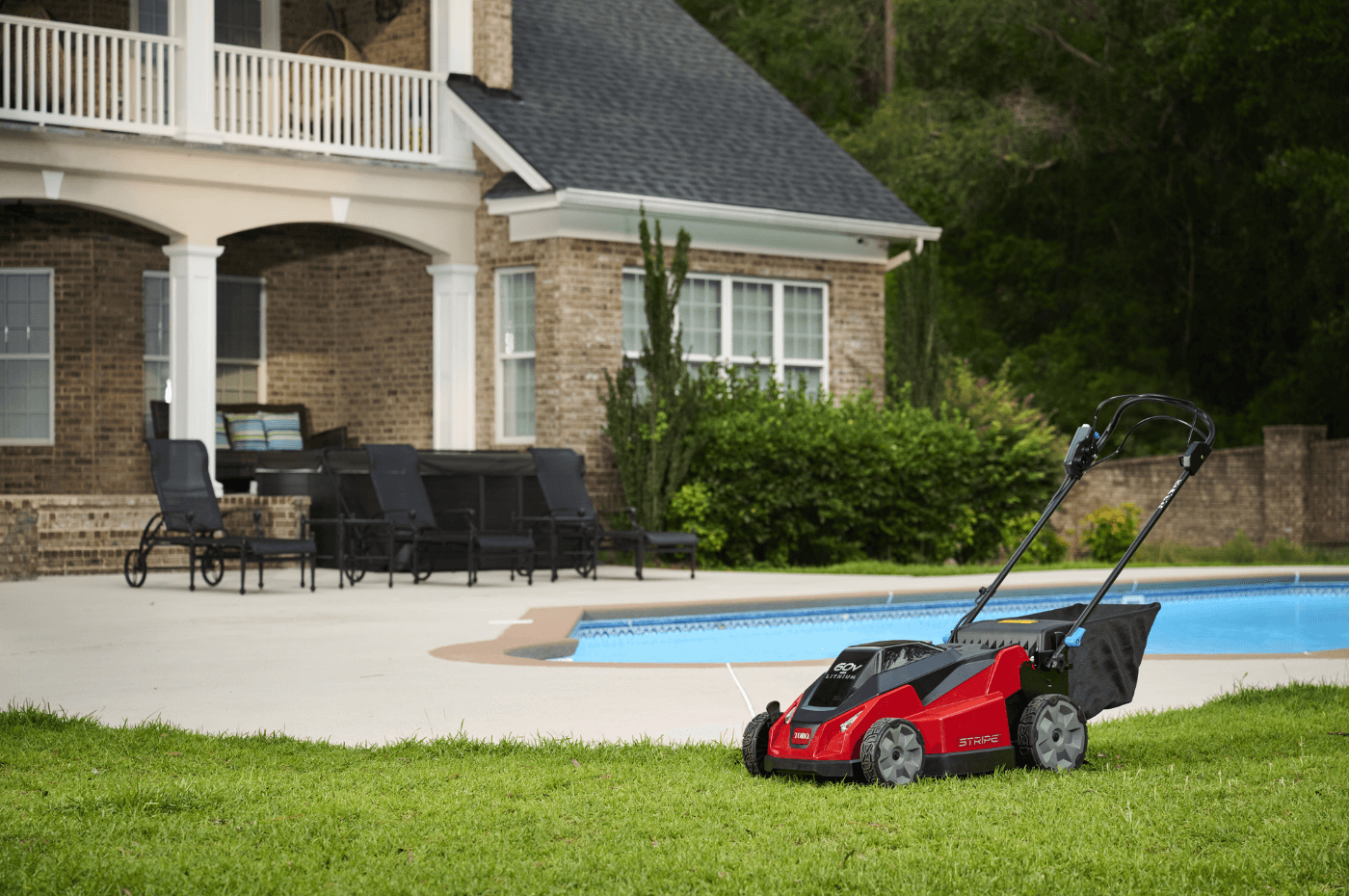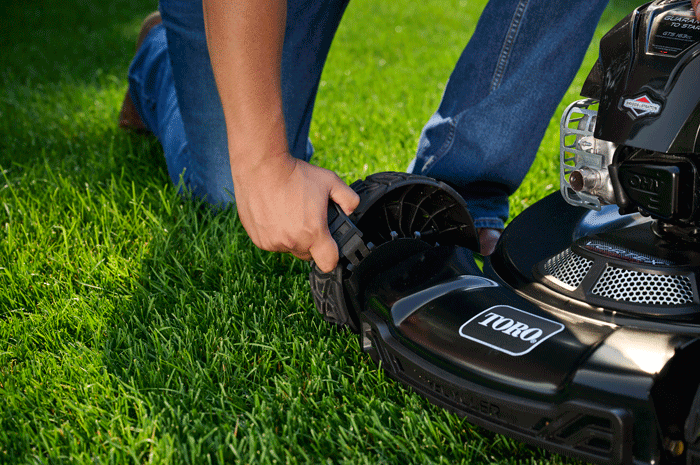
Aerating your lawn is vital in maintaining healthy, vibrant grass. By loosening the soil, you allow for a better flow of nutrients, water and oxygen to the roots, as well as more space for the roots to spread. Proper aeration will even reduce the spread of weeds. Finding the best aeration method for your yard will depend on its size, how compacted the soil is and the combination of time and budget you have available.
Core Aeration
When most people think about aerating their lawn, core aeration is the most common, and arguably the best, technique. All methods of core aeration remove small plugs of soil from the ground and will leave them in the lawn. Your yard might be a bit odd to look at initially, but the plugs will decompose on their own and reduce thatch, while the empty space will give room for denser, healthier grass to grow. There are a few core aeration tools and methods to choose from depending on your yard’s needs:
- Manual core aerators are a great, inexpensive tool choice for small lawns or if you just have a few problem spots that need help. As the name implies, these do require manual labor and could be difficult to use in larger spaces.
- Powered core aerators look and operate similarly to push lawn mowers and are available in both gas and electric powered models. Make sure to core the yard at least twice, traveling in different directions to ensure proper coring.
- Pull-behind core aerators attach to your riding mower or lawn tractor and are the most time- and labor-efficient plug aerator option, especially for large lawns. The biggest drawback is that they can be expensive and require you to already have a riding mower.
For many, renting a core aerator or hiring a professional lawn care service is a convenient, cost-effective way to treat their yard. This is because most homeowners aerate just once (at most twice a year) and they don’t want to commit funds or storage space to heavy equipment they will use sparingly.
Spike Aeration
Spike aeration is very similar to core aeration without the actual coring. Solid spikes are driven into the ground to provide a short-term fix for compacted soil. Like with core aeration, there are a few common spike aeration methods.
There are rolling and pull-behind spike aerators that work very similarly to their coring counterparts, although they are not great in rocky or debris-heavy soil. The common manual spike aerator tools are pitchforks or spiked aeration shoes, but if you’re in a pinch, a DIY solution of a strong, thin spike that can penetrate between 1 and 2.5 inches of your lawn will work.
When choosing between spike versus core aeration, keep in mind that since spike aerators do not remove any soil, they can actually make a compaction problem worse over time. However, spike aeration keeps your lawn looking much neater, so using it as an occasional fix while maintaining the look of your yard can be the best of both worlds.
Liquid Aeration
Liquid aeration is by far the most convenient, and unfortunately least effective, lawn aeration method versus core or spike aeration. Because liquid aeration does not physically move the soil, it cannot reduce compaction in the same way that physical methods do. In milder cases, liquid aeration can provide moderate relief, but it remains the least preferred method for lawn experts.
Aerate When Necessary
When you have decided on a method and have gathered the tools and time to aerate your lawn, make sure to check out our article about when is the best time to take on this task. By aerating at the proper time, you give your lawn the ability to improve its health, limit weed establishment, and recover from damage.



